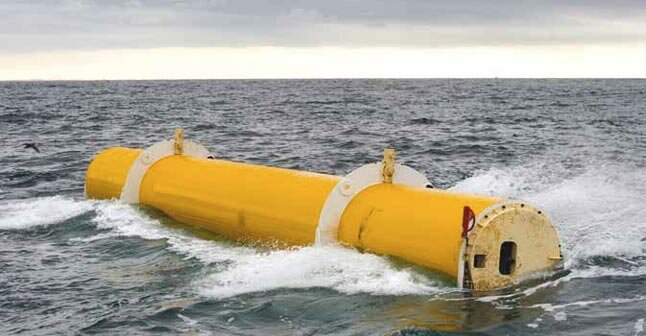- About US
- Contact Us
- Mediapack
- RSS
Innovation UK > News > Innovation UK Vol6-1 > Innovation in renewable energy - Shaping our world

Innovation in renewable energy - Shaping our world
By Filomena la Porta, Lead Technologist - Energy Generation and Supply, the Technology Strategy Board
 This project between fuel cell developer Ceres Power and utility British Gas is one example of collaboration along the supply chain. Fuel cell technology has been introduced into domestic boilers for the home ? a solution that could reduce CO2 emissions from UK households by 2.5 tonnes per year and use 25% less energy.
This project between fuel cell developer Ceres Power and utility British Gas is one example of collaboration along the supply chain. Fuel cell technology has been introduced into domestic boilers for the home ? a solution that could reduce CO2 emissions from UK households by 2.5 tonnes per year and use 25% less energy.
The UK government has set ambitious targets to obtain 15% of its energy needs from renewable energy sources by 2020 while cutting emissions by 34%.
These targets are not just about preventing climate change, but also securing our future energy supplies, for example by reducing by nearly half the amount of gas that we would otherwise import. Around 40% of electricity will need to come from low-carbon sources, from renewables, nuclear and clean coal.
To do this we will need, for example, to produce enough renewable energy by 2020 to supply almost all 26 million homes in the UK with their electricity needs, and four million homes with their heating needs.
Achieving our renewable energy targets could provide £100 billion worth of investment opportunities and up to half a million jobs in the renewable energy sector alone by 2020. It is estimated that £1-2 billion investment for the clean fossil-power sector will be needed, with the potential for the creation of 10,000-20,000 jobs.
Tremendous challenges in moving to renewable energy
There are huge challenges involved in working towards these targets for renewable energy. To name just a few:
- The current UK peak demand for electricity is around 60GW. In order to replace power stations scheduled to close in the next 10 years and meet continued electricity demand with renewable energy over the same period, more than 20GW of new generation will be required by 2020.
- The 15% renewable energy target represents almost a seven-fold increase in the share of renewables in just a decade. There are innovative renewable energy technology solutions that could help meet the challenge but they have a long way to go to become commercially available.
- For example, wave and tidal-stream renewable energy technologies have the potential to contribute to 20% of the UK electricity needs in the longer term (2050). However, these renewable energy technologies are not fully developed yet and unforeseen problems can be encountered when devices are deployed for the first time in the harsh marine environment. A research and development project involving a full-scale device might cost over £10 million.
 Aquamarine Power and Queen's University Belfast teamed up to develop the Oyster hydro-electric wave energy converter. The first 315kW Oyster 1 was grid-connected at the European Marine Energy Centre (EMEC) in Orkney, Scotland in 2009. The next-generation 2.5MW Oyster 2 is scheduled for installation at EMEC in 2011. A farm of 20 Oysters will provide enough energy to power 9,000 family homes.
Aquamarine Power and Queen's University Belfast teamed up to develop the Oyster hydro-electric wave energy converter. The first 315kW Oyster 1 was grid-connected at the European Marine Energy Centre (EMEC) in Orkney, Scotland in 2009. The next-generation 2.5MW Oyster 2 is scheduled for installation at EMEC in 2011. A farm of 20 Oysters will provide enough energy to power 9,000 family homes.
Renewable energy means fantastic business opportunities
All these challenges are also business opportunities for those able to tackle them. For example, it is estimated that the global market for wave and tidal renewable energy will be worth £500 million per annum in 2050 and, if adequately supported, the UK?s industry is in a very strong position to take advantage of this opportunity. This is why innovation in renewable energy generation and supply is an important focus for the Technology Strategy Board, as it works to help UK companies take advantage of these opportunities.
How do we make a difference?
Future renewable energy generation and supply is a trillion dollar challenge. If we look at the Technology Strategy Board?s existing portfolio of innovation projects in this sector, we are only talking about just over £200 million, of which half is industry contribution. Recently the Technology Strategy Board has been able to gain additional funding from other public sector organisations, but this is only a drop in the ocean compared to what is needed.
To make more of a difference in renewable energy we need to work with industry to:
- Focus on the UK?s strengths;
- Encourage a climate of innovation;
- Enable collaboration;
- And remember that the sum of our work is greater than the parts.
Collaboration is vital at many levels, as the Technology Strategy Board is just one of the organisations working together to address the future challenges of renewable energy generation and supply.
- The Department for Energy and Climate Change (DECC) sets energy policy and stimulates new technologies through larger-scale demonstration programmes.
- The Research Councils? effort focuses on driving UK academic excellence.
- The Carbon Trust provides specialist support to business and the public sector to help cut carbon emissions, save energy and commercialise specific low-carbon technologies.
- The Energy Technologies Institute (ETI) is a public-private partnership that invests in focused technologies at a large, system scale. The ETI leverages its private partners? network to provide a route to market for these low-carbon energy solutions.
- The Technology Strategy Board supports those areas that offer global market opportunities and for which there is a UK capacity to develop these technologies and exploit them for UK economic benefit. We share risks with businesses and adopt a collaborative approach to projects.
A Low Carbon Innovation Group has been established (see www.lowcarboninnovation.co.uk) to bring these organisations closer together, to enable greater co-ordination and minimise duplication.
By working closely with government and other public-sector organisations, we can leverage the unique strengths of each organisation to help bring solutions about renewable energy to the market, realise these business opportunities faster, and ultimately make real progress towards the challenging targets we face as a country and as a society.
For more information, visit
Website: www.innovateuk.org
Added the 26 April 2010 in category Innovation UK Vol6-1

social bookmarking











Tags: Energy innovation, renewable energy, CO2 emissions, emissions, low-carbon technologies